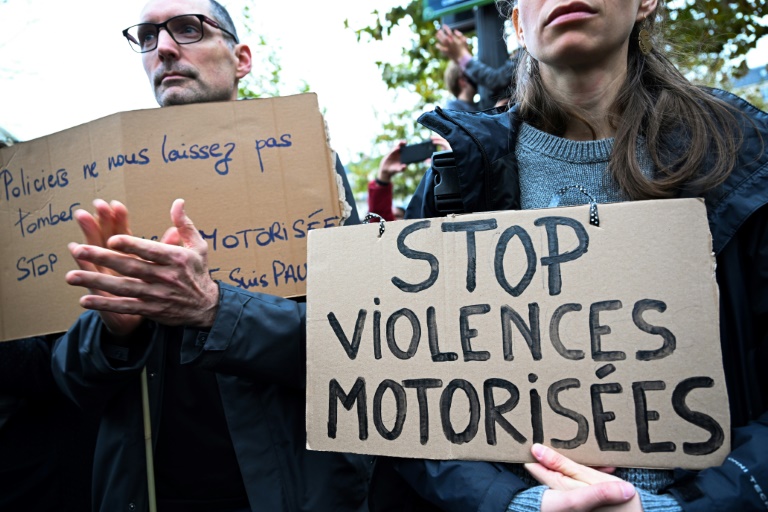On a recent Saturday, hundreds of demonstrators across France came together to address the growing concern of “motorised violence” following a tragic incident that resulted in the death of a 27-year-old cyclist, Paul Varry, in Paris. Varry was crushed by an SUV driver after a confrontation, an incident that has heightened tensions around cycling and road safety in the densely congested streets of the capital. In Paris alone, nearly 1,000 protesters, many of whom were cyclists, congregated to advocate for safer cycling conditions. They carried signs with slogans like “less speed, more tenderness,” emphasizing the need to reassess traffic norms and promote a more empathetic approach to road-sharing. One protester articulated the shared sentiment, stating that the road “belongs to nobody and to everybody,” capturing the urgency of the issue from both cyclists and motorists alike.
The rally was marked by a palpable sense of grief and anger. Anne Monmarche, the president of Paris en Selle, a cyclists’ advocacy group, stressed the importance of addressing motorised violence, stating that the authorities must take the issue seriously. Monmarche highlighted that Varry was a dedicated advocate for cyclists’ rights and safety, and his death has become a rallying cry for the movement demanding better conditions for cyclists. In light of the incident, Monmarche is scheduled to meet with Transport Minister Francois Durovray to discuss proposals from civil society aimed at creating safer cycling policies in the future. This meeting underscores the intent of advocates to engage constructively with policymakers in order to forge a safer urban environment for cyclists.
The emotions at the protest were further amplified by the tragic circumstances surrounding Varry’s death. Participants took a moment of silence to honor him, reflecting not only on the loss of a fellow advocate but also on the pervasive dangers cyclists face daily. Comments from Ariel Weil, the mayor of central Paris, recognized Varry’s contributions to the cause and reinforced the need for improved security measures for cyclists. Varry’s mother, who attended the rally, expressed her shock and called for justice, revealing the profound personal impact of the tragedy on his family and friends. The demonstration became a platform for many to voice their frustrations and to mourn collectively, emphasizing the deep emotional scars such incidents leave on communities.
Demonstrations occurred not just in Paris but also in various cities across France, including Toulouse, Nantes, Amiens, and Bordeaux, where local cycling advocacy groups organized events to honor Varry and to call for action. In Toulouse, a protester likened Varry to a “martyr” for the movement, indicating that his death has resonated widely among cyclists advocating for safer roads. This sentiment was echoed in Nantes, where demonstrators noted the inadequacy of public discourse surrounding cycling safety, particularly in rural areas where many incidents go unreported. Here, the demonstrations served to bring visibility to the often-overlooked issue of cyclist safety outside major urban centers.
A recurring theme throughout the protests was the need for a cultural shift regarding how cars are perceived in society. Demonstrators insisted that cars should not be viewed as extensions of one’s identity, with participants like Barbara Delattre, a secondary school teacher from Nice, asserting that a reevaluation of road behavior and attitudes toward cycling is critical for improving public space sharing. Others, such as Nicole Penot in Strasbourg, raised concerns about the frequency of daily altercations between cyclists and vehicles, advocating for a comprehensive rethinking of urban planning and road safety policies to accommodate more equitable space for all road users.
The wave of protests sparked by Varry’s death sheds light on a larger issue regarding the relationship between cyclists and motorists in France. As the National Federation of Cyclists indicates, many of the 226 cyclists killed on French roads this year were in areas far removed from city centers, suggesting that dangers may be even more pronounced in less monitored settings. Advocacy groups like Velo-Cite in Bordeaux are already using terms like “cyclicide” to describe the alarming trend of cyclist fatalities, demanding urgent action and policy changes to protect those on two wheels. The outpouring of support and calls for increased awareness and accountability following this tragic event indicate a growing recognition of the need for change in how public spaces in France are managed, ultimately aiming for safer roads for all.

